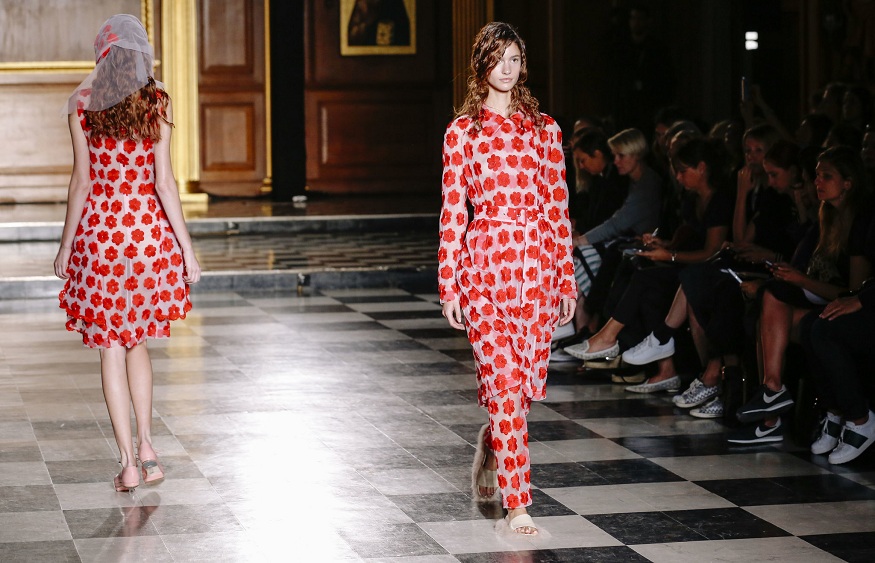British womenswear is having a moment. From the fashion runways to the streets, there’s something undeniably appealing about classic British womenswear that has people talking. In this article we’ll explore what makes this timeless look so special and why it’s making such a comeback. From its roots in high-end luxury to its modern-day twist, we’ll take you through all the elements that make British womenswear stand out from the crowd.
Introduction to British Womenswear
When it comes to style, the British have always been ahead of the curve. From the invention of the miniskirt to the popularity of the Chelsea boot, Britain has always been at the forefront of fashion. In recent years, there has been a resurgence in interest in classic British womenswear. This is likely due to a combination of factors, including the popularity of shows like Downton Abbey and The Crown, which have put a spotlight on British fashion history.
In this article, we’ll explore the origins of some classic British styles and looks. We’ll also take a look at why British womenswear is coming back into style. So whether you’re looking to add a few quintessentially British pieces to your wardrobe or you’re just curious about the history of British fashion, read on!
A Brief History of classic British womenswear
Though it may seem like a relatively new phenomenon, British womenswear has been fashionable for centuries. In fact, some of the most iconic looks in fashion history were popularised by British women. Here is a brief history of classic British womenswear:
The Early 1800s: The Regency Era
The early 1800s were defined by the Regency era, during which time London was considered the fashion capital of the world. Women during this time period were known for their elegant and refined style, characterised by well-fitting dresses with high waists and intricate details.
The Late 1800s: The Victorian Era
The late 1800s were marked by the Victorian era, a time when Britain was at the height of its power and influence. Women during this period were known for their conservative style, characterised by long skirts and dresses with high necklines.
The Early 1900s: The Edwardian Era
The early 1900s were defined by the Edwardian era, named after King Edward VII. This was a time of great change in Britain, and women’s fashion reflected this with more relaxed silhouettes and shorter hemlines.
The Late 1900s: The Twenties & Thirties
After the First World War, Britain underwent a period of economic prosperity which led to a more carefree attitude towards life. This is reflected in the fashion of the times, which was characterised by shorter hemlines, brighter colours, and more casual styles.
Exploring the Origins and Influences of British Fashion
British style is often thought of as being classic and timeless. However, it has also been influenced by a number of different factors over the years.
One of the most important influences on British fashion has been the weather. The climate in Britain is notoriously unpredictable, which has led to a need for clothing that can be easily layered. This has resulted in pieces such as trench coats and cardigans becoming key staples in a British wardrobe.
Another significant influence on British style has been the country’s history. Britain has a long and rich history, which is reflected in its fashion. For example, the Victorian era was known for its extremely elaborate clothing, while the Edwardian period saw a more simple and natural style come into fashion.
More recently, Britain has been heavily influenced by street style and youth culture. This can be seen in the popularity of brands such as Supreme and Palace, as well as in the rise of streetwear-inspired fashion labels such as Astrid Andersen and Christopher Kane.
Looking to the future, it is clear that British style will continue to be influenced by a variety of factors. Whether it is the ever-changing weather or the ever-evolving trends of youth culture, there is no doubt that British fashion will remain unique and stylish for many years to come.
Common Themes in British Womenswear
There are many common themes in British womenswear, including a focus on classic silhouettes, muted colours, and quality fabrics. British designers have a long history of creating clothing that is both stylish and practical, and this tradition continues today. Many British brands are known for their timeless designs, which can be worn year after year without going out of style.
While trends come and go, certain elements of British style remain constant. For example, the classic trench coat is a staple in many British women’s wardrobes. This timeless piece can be dressed up or down, and is perfect for transitional weather. Another iconic piece of British womenswear is the denim jacket. This versatile item can be worn with everything from jeans to dresses, making it a must-have in any wardrobe.
Quality is another important factor in British womenswear. Many British brands use high-quality materials and construction techniques to create garments that will last for years. This attention to detail ensures that British clothing will stand the test of time, both in terms of style and durability.
Whether you’re looking for everyday staples or special occasion pieces, British womenswear has something to offer everyone. With a focus on classic design, muted colors, and quality construction, British brands have created a unique aesthetic that is both stylish and practical.
Examples of Classic British Pieces
The British style is often compared to that of the French, but there are some key differences. British style is more about classic pieces that can be worn for years, while French style is more about trends and following the latest fashion.
Some key pieces in British womenswear include the trench coat, the little black dress, and the Chanel suit. These pieces are timeless and can be worn year after year. They also have a certain sophistication that is unique to British style.
Trench coats are a must-have in any British wardrobe. They are perfect for both rainy days and chilly evenings. The little black dress is another staple piece that every woman should own. It can be dressed up or down depending on the occasion. The Chanel suit is a timeless piece that will never go out of style. It is perfect for work or formal occasions.
These are just a few examples of classic British pieces that are making a comeback in the world of fashion. If you want to embrace your inner Brit, start with these key pieces and build your wardrobe from there!
Tips on How to Incorporate classic British womenswear into Your Wardrobe
British style is characterised by classic pieces with a modern twist. Here are some tips on how to incorporate British style into your wardrobe:
- Start with the basics. A good foundation for a British-inspired wardrobe is a well-fitting pair of black trousers, a white shirt, and a tailored blazer.
- Add in some colour and pattern. Brits are known for their love of colour and pattern, so don’t be afraid to add a pop of colour or print to your look.
- Incorporate timeless pieces. classic British womenswear is all about timeless pieces that can be worn season after season. Invest in key pieces like a trench coat or riding boots that will never go out of style.
- Accessorise accordingly. The right accessories can really make or break a British-inspired outfit. Opt for chic and understated accessories like a pearl necklace or scarf tied in a bow.
Conclusion
British womenswear is coming back into style with a renewed interest in classic British silhouettes and materials. By looking into the origins of this iconic look, we can better understand why it has become such a popular trend again. From the traditional tweed to modern interpretations of classic shapes, British womenswear has something for everyone. Whether you are looking for timeless sophistication or an edgy take on the classics, there is no denying that British womenswear is here to stay!

